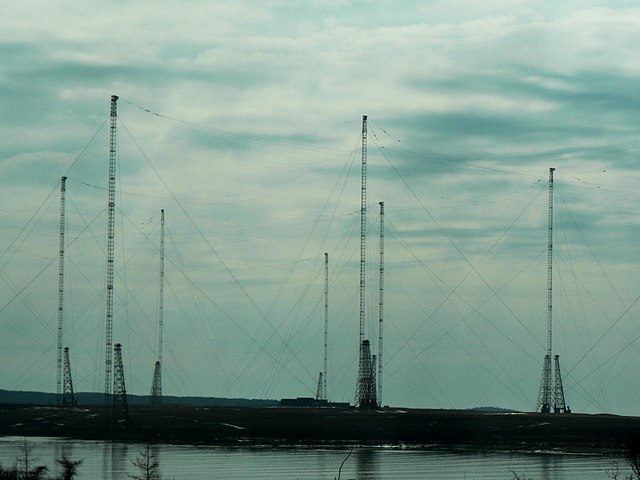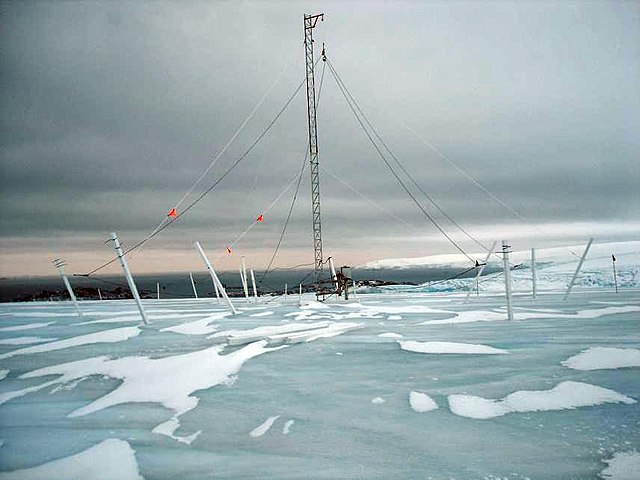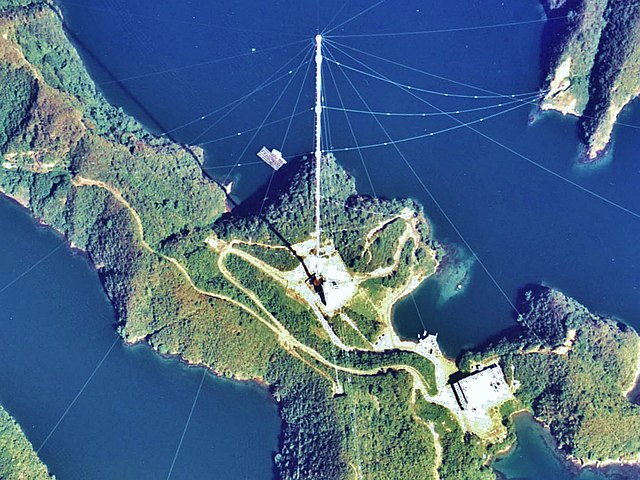The VLF Transmitter Cutler is the United States Navy's very low frequency (VLF) shore radio station at Cutler, Maine. The station provides one-way communication to submarines of the Navy's Atlantic Fleet, both on the surface and submerged. It transmits with call sign NAA, at a frequency of 24 kHz and input power of up to 1.8 megawatts, and is one of the most powerful radio transmitters in the world.
A few of the antenna towers of the Cutler VLF Transmitter
The Cutler VLF transmitter antenna masts as seen from across the Little Machias Bay at a distance of about 2 miles.
Very low frequency or VLF is the ITU designation for radio frequencies (RF) in the range of 3–30 kHz, corresponding to wavelengths from 100 to 10 km, respectively. The band is also known as the myriameter band or myriameter wave as the wavelengths range from one to ten myriameters. Due to its limited bandwidth, audio (voice) transmission is highly impractical in this band, and therefore only low data rate coded signals are used. The VLF band is used for a few radio navigation services, government time radio stations and for secure military communication. Since VLF waves can penetrate at least 40 meters (131 ft) into saltwater, they are used for military communication with submarines.
A VLF receiving antenna at Palmer Station, Antarctica, operated by Stanford University
Central mast of a similar "trideco" antenna of the NATO VLF transmitter at Anthorn radio station, UK, showing 6 insulator strings attaching the toploads to the 6 vertical radiator wires
Umbrella antenna of the Omega navigation system beacon on Tsushima Island, Japan, which transmitted at 10-14 kHz; 389 meters high, it was dismantled in 1998.
Flattop antenna towers of the Grimeton VLF transmitter, Varberg, Sweden






